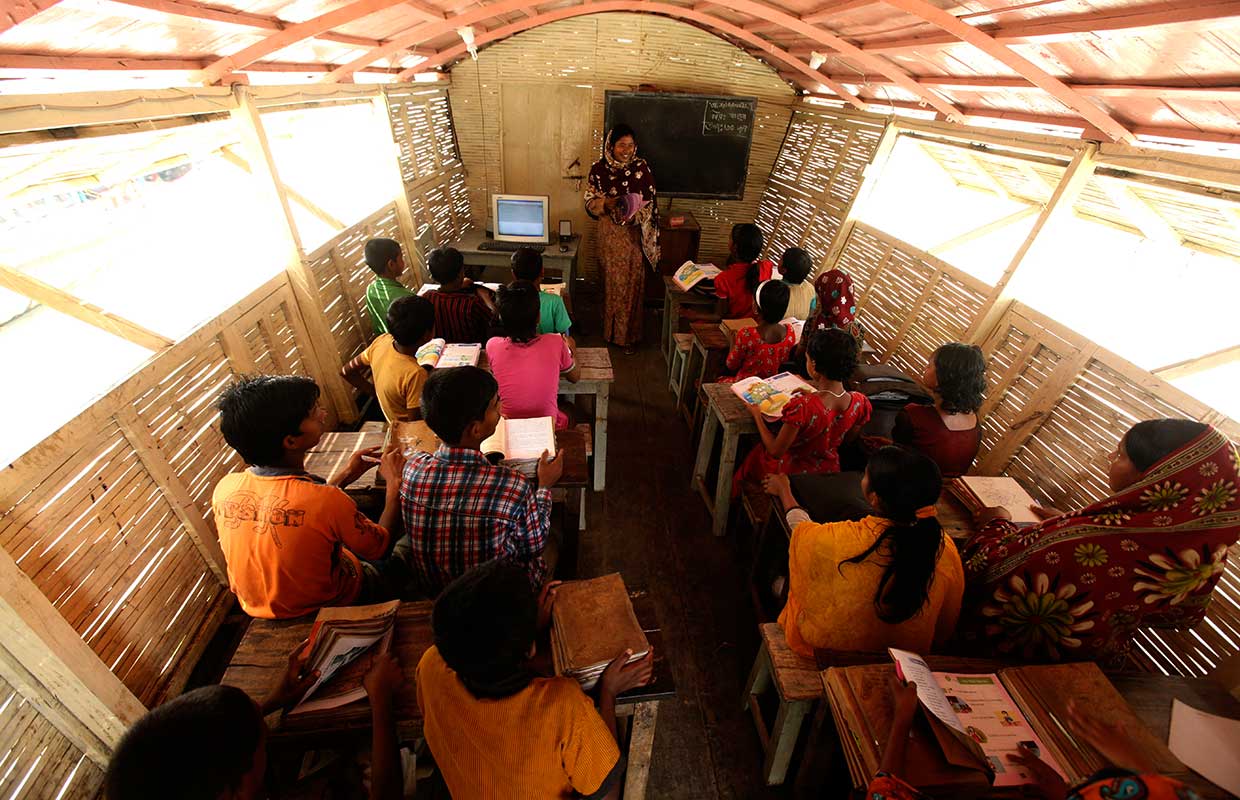What inspired you to build a floating school in Bangladesh?
As a native of a flood-prone community I saw first-hand the hardship of riverside communities who have restricted access to education and the opportunities it affords. With roads impassable during the monsoon season (July to October), students are unable go to school leading to a high number of dropouts in the flood-prone regions. Although our family owned a small boat that ensured my travel to school during the monsoon season I saw many of my friends and relatives could not go, something found difficult to accept. I thought that if the children cannot come to the school for lack of proper transportation, then the school should go to them, by boat.
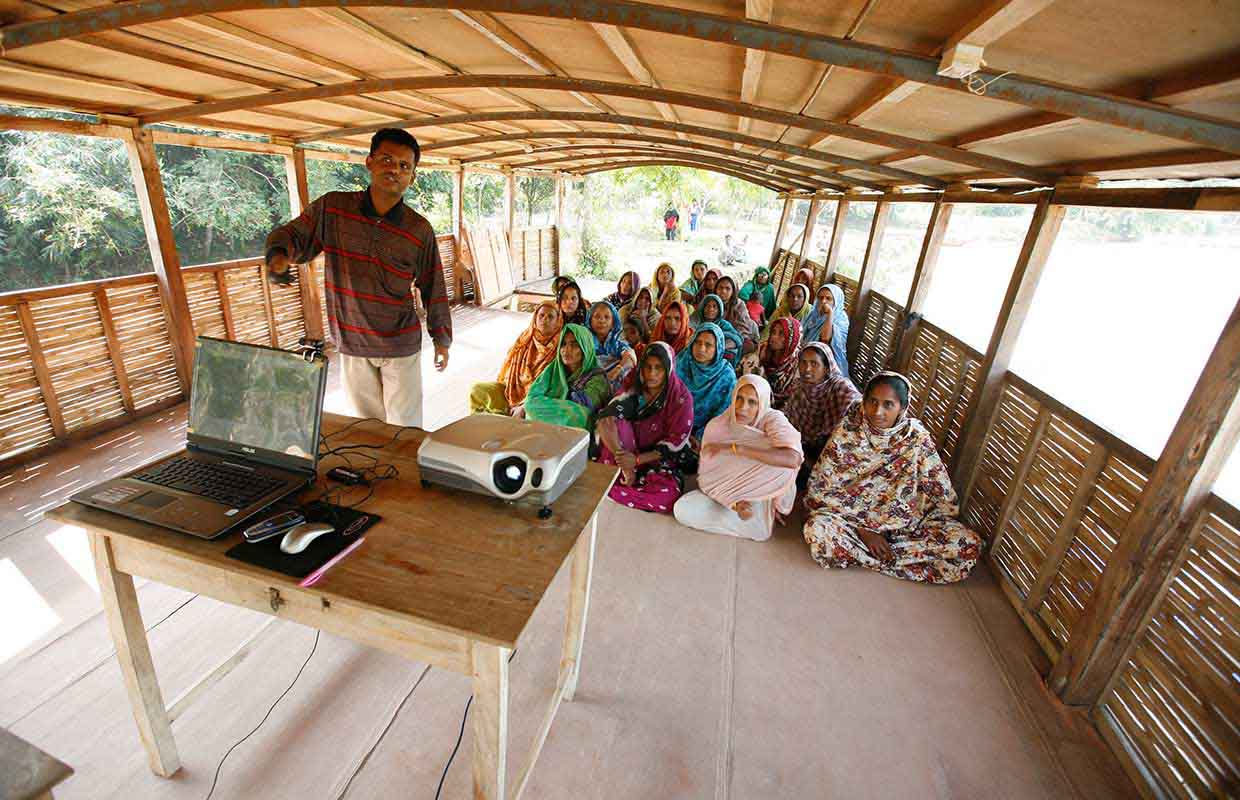
What were the most important components of making your boat schools?
It was four years that I was able to build the first floating school. I started looking for cheap local materials. I found it in our riverside areas where some old boats go to die. I collected an old boat hull and from the wreckage I found a new life for the old boat, the floating school.
At first it was a lonely enterprise. The people at the community were skeptical, but they were awakened at the potential. The volunteers stepped forward one by one, for example, the boatman, the teachers were from the rural community. In every way the whole community, rural people were involved with the project. They understood and believed that it was their own project.
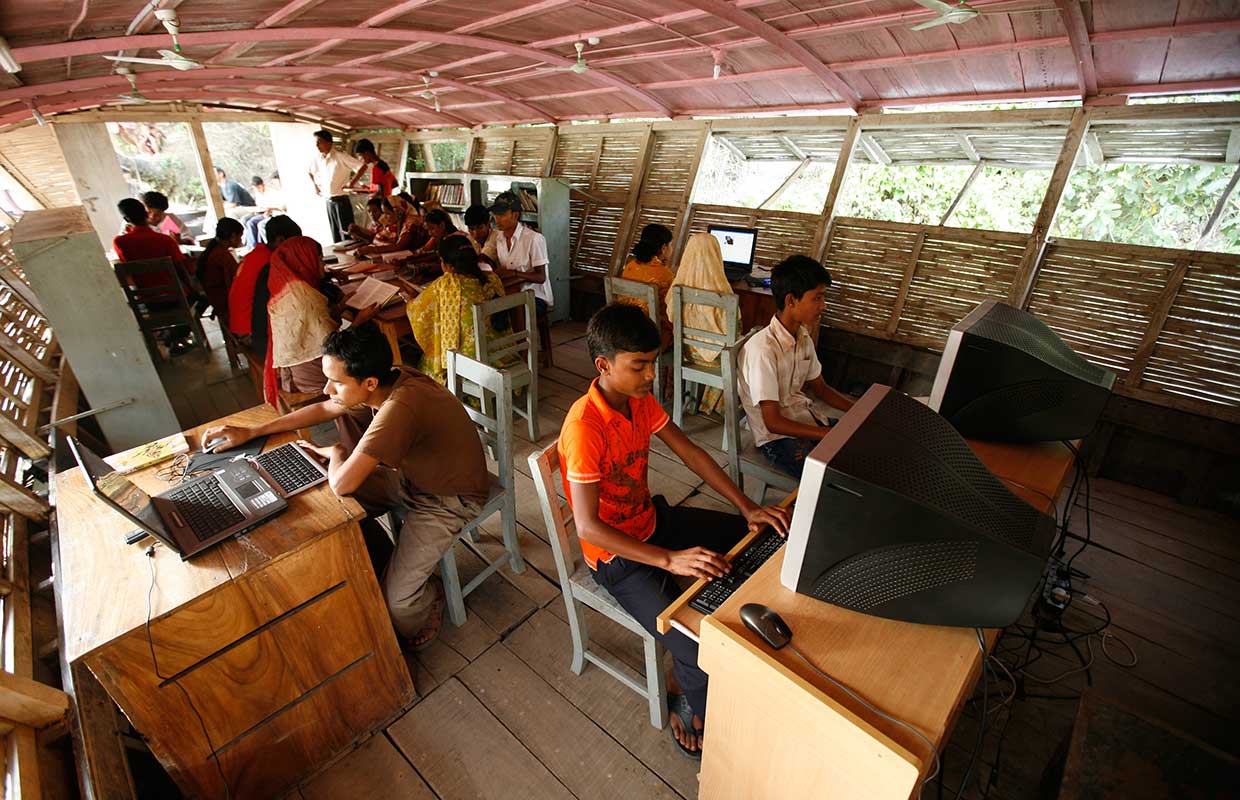

While working on your floating school did you work together with pedagogical specialists, the teachers, the parents or local community?
I shared my initial idea with the community members in a meeting at riverside courtyard. The community fully participated in the project design and implementation. They were also involved in deciding boats’ stations and schedules. We have created local contents in cooperation with the skilled volunteers from university and research institute.

>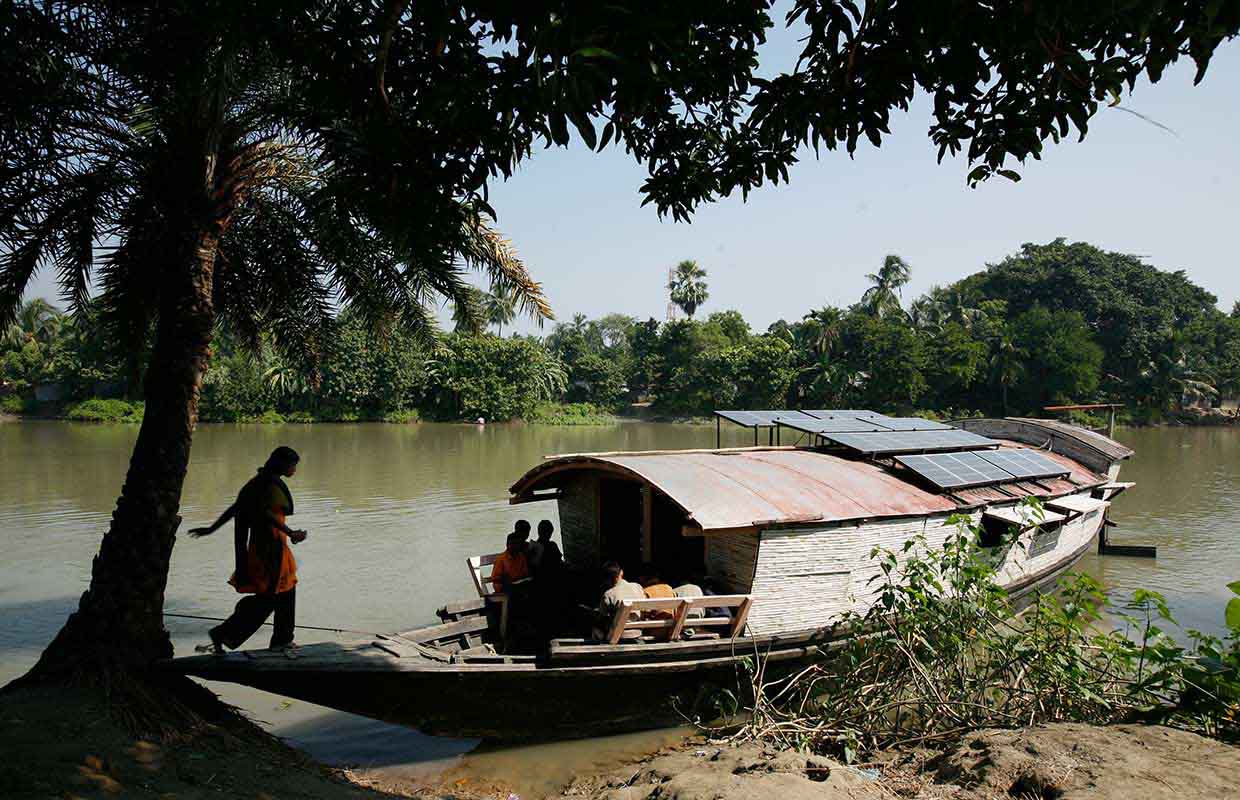
What do you think are people ready to experiment with new educational architechture?
People are not ready to experiment with new and unusual design things for the local community in developing countries. But I thought as an architect I would design exciting things to help the poor in our own communities. I considered dedicating my life to building schools and hospitals in our flood-prone community, then I realized they would be under water soon. That’s why I started designing boats for schools and floating community. I was inspired by our culture of living with nature and also with our coping capacity.

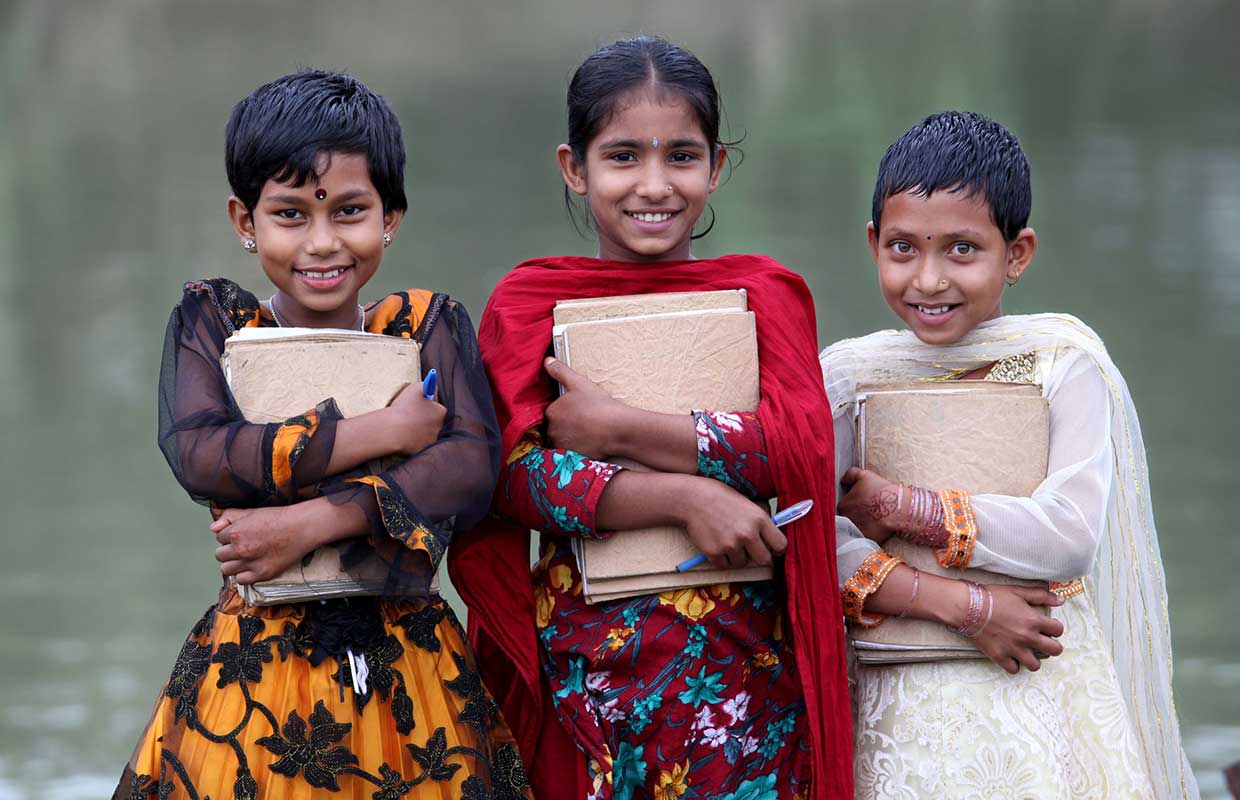
How you define the good spirit of a good place for children?
We want all children to have access to school and all rural students to continue their education throughout the year in flood-prone areas around the world. We want to see parents encourage their girls to go to school. We want to see the girls and women taking full advantage of the education and information facilities available in their community. We want to see our resilient people working together to improve their quality of life and no longer living below the poverty line.
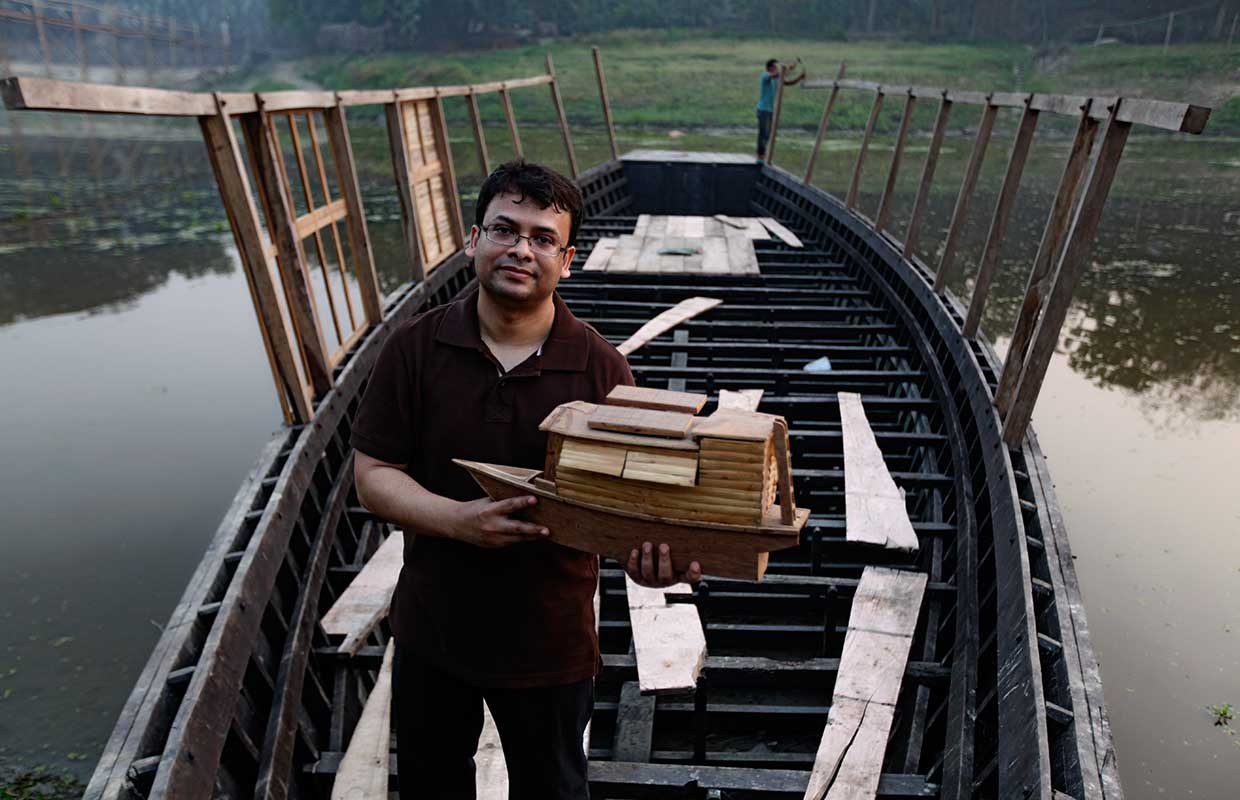 Mohammed Rezwan
Mohammed Rezwan
The Gathering Storm | Boat School
Please get in touch with Mohammed Rezwan via:
www.shidhulai.org
Photos Abir Abdullah and Mohammed Rezwan/Shidhulai Swanirvar Sangstha.

